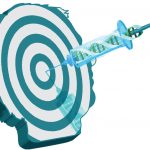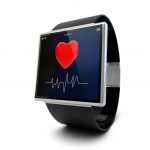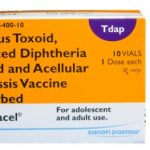Pursuit of Vaccine and Managing Lab Protocols during the Covid19 Pandemic
On April 22, 2020, the Director-General of the World Health Organization (WHO) said, “To be clear, WHO’s advice is to find and test every suspected case, not every person in a population.”

While testing every person is not essential to controlling COVID-19, finding and testing every suspected case is. As the COVID-19 outbreak sweeps across the globe, the world turns to laboratories for answers. Laboratory scientists are responding by providing doctors with ways to diagnose COVID-19 and by pursuing the development of a vaccine that could someday stop the pandemic in its tracks. Until a vaccine is found, social distancing and testing are the best ways to control the spread of the disease.
The 2019 novel coronavirus, now named SARS-CoV-2, has sickened millions of people with COVID-19. By the end of April 2020, the United States had by far the highest number of confirmed cases and deaths in the world, according to Johns Hopkins University.
Testing is the only way to determine the case fatality rate (CFR), which is the ratio between confirmed deaths and confirmed cases. Testing is also the best way to assess the overall effectiveness of preventive measures and vaccines. Determining the CFR requires time and reliable data to confirm cases and deaths based on trusted laboratory testing. Strict adherence to proven and accepted laboratory protocols provides the most accurate data possible.
Managing Laboratory Protocols during the COVID-19 Outbreak
Managing laboratory protocols during the SARS-CoV-2 outbreak is challenging because, as with the outbreak of any novel virus, researchers are entering uncharted territories. Virologists had a limited understanding of transmission patterns, clinical features, severity, and risk factors for COVID-19 infection at the start of the pandemic. To address those unknowns, WHO established Four Early Investigation Protocols, which are now known as the WHO Unity Studies.
The protocols rapidly and systematically collect and store data that will be critical in refining recommendations for case definition and surveillance, and for characterizing the key epidemiological features of COVID-19. The protocols will also help the medical community gain a greater understanding of the spread, severity and spectrum of the disease, as well as its impact on the community. Information gained from the data will help guide countermeasures, such as case isolation and contact tracing.

Rapid detection of COVID-19 cases is essential for controlling the emergence of this rapidly spreading illness and for understanding the key epidemiological features of the disease, but rapid detection requires wide availability of diagnostic testing.
Within a month of the first outbreak in China, the Centers for Disease Control and Prevention (CDC) developed a real time Reverse Transcription-Polymerase Chain Reaction (rRT-PCR) test that can diagnose COVID-19. The CDC provides instructions for the use of real-time rT-PCR assays for the in vitro qualitative detection of coronavirus in sera and respiratory specimens. FIND also maintains a list of SARS-CoV-2 tests in development or commercially available for COVID-19, and WHO maintains a list of COVID-19 in-house PCR protocols assays.
Challenges of managing laboratory protocols
Even with reliable assays, managing laboratory protocols during COVID-19 is challenging. The pandemic has disrupted the supply chain for many laboratories, for example. Personal protection equipment (PPE) is scarce, for example, and there have been shortages of SARS-CoV-2 PCR reagents.

Biosafety is also a major concern, as keeping lab workers safe is a high priority. The CDC has released biosafety guidelines for labs working with Coronavirus: Interim Laboratory Biosafety Guidelines for Handling and Processing Specimens Associated with Coronavirus Disease 2019 (COVID-19). These guidelines include essential information on virus isolation, waste management, and decontamination. The EPA also released an expanded COVID-19 disinfectant list on March 13, 2020, but social distancing is far more effective than disinfection for controlling viral transmission. Unfortunately, social distancing is much more difficult than disinfection in a typical laboratory, where technicians work side by side and in close proximity to specimens.
While the protocols are far from perfect, and disruptions in the supply chain can slow testing, laboratory protocols will continue to play an important role in preventing the spread of COVID-19 until a vaccine is found.
Pursuit of a COVID-19 Vaccine
The best way to defeat COVID-19 is to develop a vaccine, of course, but vaccine development can often take 10 to 15 years. Vaccines for respiratory viruses are also elusive. Two toddlers died in 1966 from respiratory syncytial virus (RSV), for example, and vaccines for the parainfluenza viruses (PIVs) and metapneumovirus (MPVs) are still not available.
There are 120 projects working towards a vaccine; only five have received approval for clinical trials in humans. University of Oxford researchers began Phase I human trials of ChAdOx1 nCoV-19 in late April. In this trial, half of the roughly 1100 participants receive ChAdOx1 nCoV-19 vaccine, while the control group receives the common meningitis vaccine, MenACWY. The first two volunteers, one from the test group and one from the control, received their inoculations on April 23, 2020.

Fast tracking the development of this vaccine or others could potentially save thousands or millions of lives, providing the vaccine undergoes sufficient testing to ensure its safety and efficacy. It is possible to get a licensed vaccine in one and a half to two years, and even possible to get a vaccine into use much sooner. Reliable laboratory testing will help researchers determine if their vaccines are working.
Many of the battles against the COVID-19 outbreak will be fought in laboratories in the United States and around the world. Widespread testing will play an important role in reducing deaths associated with coronavirus and improving the health and well-being of people across the globe.
To View Frank Magliochetti Press Releases Please CLICK HERE
Frank Magliochetti owes his professional success to his expertise in two areas: medicine and finance. After obtaining a BS in pharmacy from Northeastern University, he stayed on to enroll in the Masters of Toxicology program. He later specialized in corporate finance, receiving an MBA from The Sawyer School of Business at Suffolk University. His educational background includes completion of the Advanced Management Program at Harvard Business School and the General Management Program at Stanford Business School. Frank Magliochetti has held senior positions at Baxter International, Kontron Instruments, Haemonetics Corporation, and Sandoz. Since 2000, he has been a managing partner at Parcae Capital, where he focuses on financial restructuring and interim management services for companies in the healthcare, media, and alternative energy industries. Earlier this year, he was appointed chairman of the board at Grace Health Technology, a company providing an enterprise solution for the laboratory environment.


Mr. Frank Magliochetti MBA
Managing Partner
Parcae Capital
www.parcaecapitalcorp.com
www.frankmagliochetti.com
SOURCES:
https://coronavirus.jhu.edu/map.htmlhttps://www.who.int/emergencies/diseases/novel-coronavirus-2019/technical-guidance/early-investigations
https://www.cdc.gov/coronavirus/2019-ncov/lab/index.htmlhttps://www.finddx.org/covid-19-2/pipeline/
https://www.who.int/docs/default-source/coronaviruse/whoinhouseassays.pdf?sfvrsn=de3a76aa_2
https://asm.org/Articles/Policy/2020/March/ASM-Expresses-Concern-about-Test-Reagent-Shortageshttps://www.cdc.gov/coronavirus/2019-ncov/lab/lab-biosafety-guidelines.htmlhttps://www.epa.gov/pesticide-registration/list-n-disinfectants-use-against-sars-cov-2
https://www.labconscious.com/blog/2020/3/17/laboratory-sustainablity-in-the-coronavirus-crisishttps://www.historyofvaccines.org/content/articles/vaccine-development-testing-and-regulation
https://cvi.asm.org/content/23/3/189https://www.ncbi.nlm.nih.gov/pmc/articles/PMC4547785
https://www.cbsnews.com/news/coronavirus-vaccine-covid-19-human-clinical-trial-oxford-england/
http://www.ox.ac.uk/news/2020-04-23-oxford-covid-19-vaccine-begins-human-trial-stagehttps://www.drugbank.ca/drugs/DB15656







